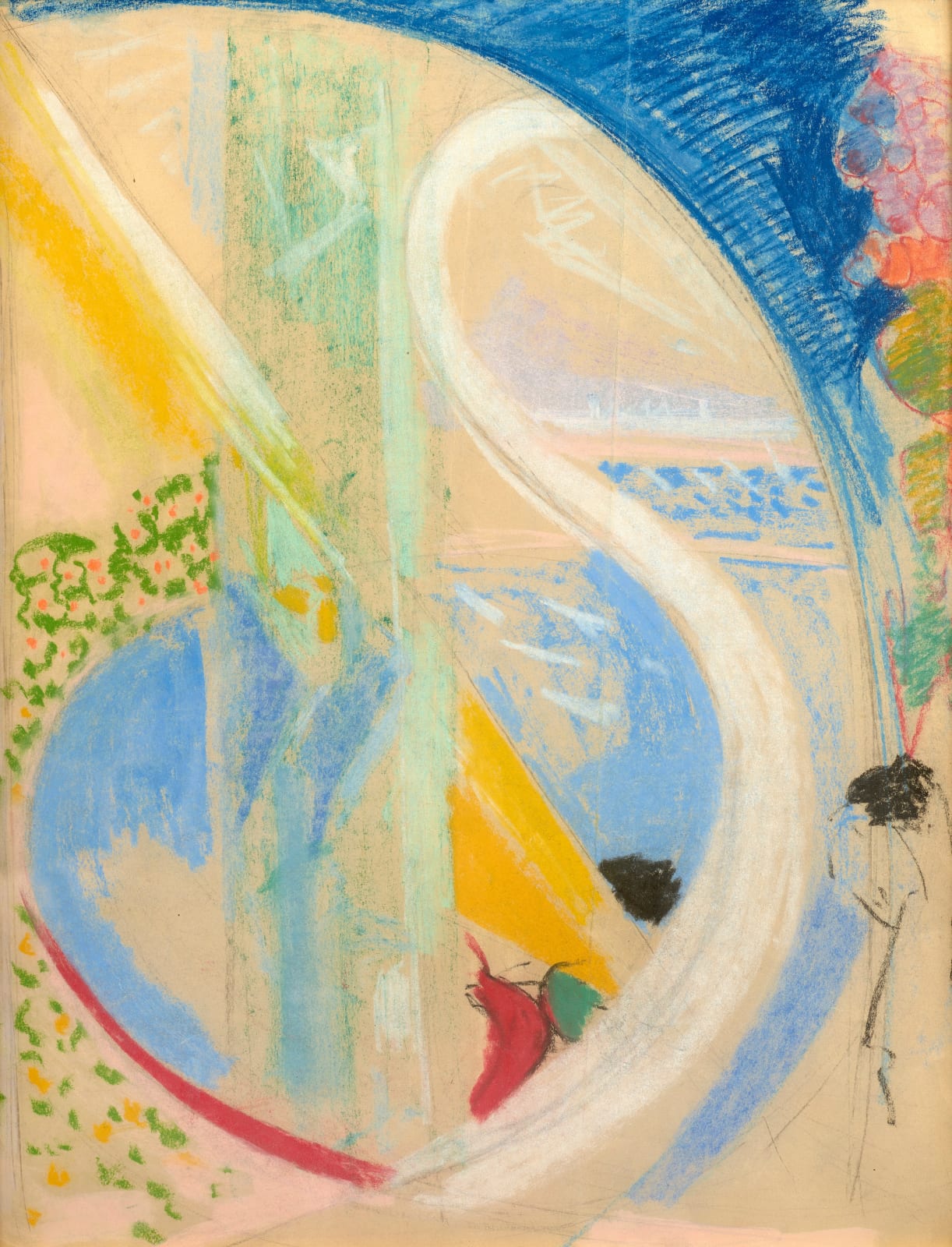-
Joseph Stella Italian, American, 1877-1946
Abstraction, c. 1918Pastel on paper23¼ x 18 inches
58.9 x 45.7 cmAn immigrant from a small southern Italian hill town, Joseph Stella arrived in New York at age nineteen enamored by the energy of the city but also ambivalent toward its...An immigrant from a small southern Italian hill town, Joseph Stella arrived in New York at age nineteen enamored by the energy of the city but also ambivalent toward its oppressive power...Bridges, factories, tunnels, and towers signaled the energy and promise of the young American nation, and Stella’s modern interpretations of these subjects propelled him to international fame....A much-anticipated return to Italy in 1909 enabled Stella to seek out inspiration from the Old Masters, and he studied them voraciously. An excursion to Paris in 1911–12, however, awakened him to new styles of painting. As he explained in a 1913 essay, “The New Art,” “for the first time, I realized that there was such a thing as modern art . . . and as true and great as the old one.” He soon launched into his first efforts in abstraction.
— Stephanie Mayer Heydt, excerpt from "Joseph Stella: Visionary Nature"
Provenance
The artist; to
Estate of the artist, 1946; to
Josephine M. Lettera, New Rochelle, New York; to
The present owner, Washington, D.C., in 1990, until the presentExhibitions
Pensler Galleries, Washington, D.C., Joseph Stella: Paintings and Works on Paper, 1990, p. 50, no. 4, illus. in color p. 9, as c. 1914
Whitney Museum of American Art, New York, Joseph Stella, April 22–October 9, 1994, no. 71
Eaton Fine Art, Inc., West Palm Beach, Florida, Joseph Stella, January 9–March 6, 1998
Schoelkopf Gallery, New York, Joseph Stella: Unsealed from Paradise, October 12–December 1, 2023Literature
Barbara Haskell, Joseph Stella, New York: Whitney Museum of American Art, 1994, p. 272, no. 71, illus. in color p. 60
Subscribe to our mailing list to receive updates from the gallery
* denotes required fields
We will process the personal data you have supplied in accordance with our privacy policy (available on request). You can unsubscribe or change your preferences at any time by clicking the link in our emails.

